Introduction
When most people see a cute puppy, it’s hard to hold back and not simply melt. But of course, even the cutest puppies grow up someday. After the puppy stage comes the rebellious phase, and then hopefully many happy years together with the adult dog. And then, one day, you realize that the cute little ball of fur you once had has become a senior citizen who prefers to lie comfortably on the carpet rather than chase a ball, and whose joints creak when you get up.
Older dogs do indeed need more care than younger ones to live a happy life – but they deserve it! In this article, we explain the changes you need to prepare for as your dog gets older.
When are dogs old?
When we talk about “old dogs,” the first question that naturally arises is when a dog actually becomes old. It’s generally said that one dog year is equivalent to seven human years, but what does that actually mean? After all, there are big differences between people too: While some show the first signs of aging in their mid-40s, others are still in top shape at 70!
Furthermore, the breed also plays an important role for dogs. Larger breeds, such as Great Danes, Newfoundlands, and Irish Wolfhounds, in particular, typically have a significantly shorter life expectancy and rarely live longer than 8-10 years, while “older” breeds, such as medium-sized poodles or schnauzers, can live to be 15-18 years old. Depending on this, the first signs of aging will naturally appear sooner or later. Therefore, it is important to observe closely so that you can help your old companion when signs of aging appear.
Activity in old age – take everything a little more relaxed
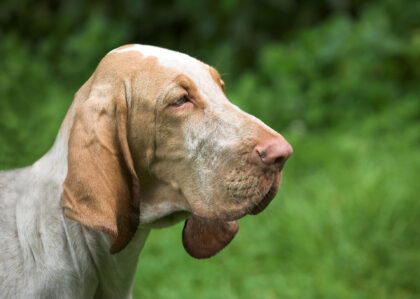 In general, one thing can be said: the activity level of senior dogs is lower than that of younger ones. While there are lazy young dogs as well as active old dogs, it’s inevitable that a four-legged friend will become quieter as they get older. And if we’re honest, that’s understandable; after all, old dogs are no different than old people in this regard. They’ve already experienced a lot and approach new situations more relaxed – generally, one could easily say that older dogs are easier to care for.
In general, one thing can be said: the activity level of senior dogs is lower than that of younger ones. While there are lazy young dogs as well as active old dogs, it’s inevitable that a four-legged friend will become quieter as they get older. And if we’re honest, that’s understandable; after all, old dogs are no different than old people in this regard. They’ve already experienced a lot and approach new situations more relaxed – generally, one could easily say that older dogs are easier to care for.
This natural decline in vitality also means that owners have to be considerate of their canine friends in many ways. Even though senior dogs need exercise and walks just as much as young dogs, they should still be kept in balance. Jogging alongside a bike is often too stressful for the joints as we get older, and stamina also declines. A quiet, relaxed walk, on the other hand, is pleasant and not only provides the necessary exercise, but also offers interesting mental stimulation through the exposure to new smells and gives the senior dog the opportunity to socialize with other dogs.
If your old friend still wants to play, they should do so. However, chasing a stick or a Frisbee is often no longer the right pastime. But something can be done for their mind to further train their brain activity and memory. There are, for example, excellent memory and concentration games for dogs.
Especially on hot days or in the midday heat, walks and rough games with an older dog should be avoided. Just like older people, older dogs’ circulation is nowhere near as stable as that of younger dogs. Therefore, it is advisable to discourage senior dogs from daring jumps into cold streams on hot summer days – it is better to lead them slowly into shallow water to avoid a shock to their circulation. Always important: Drink plenty of water! Many of the tips aren’t all that different from those that apply to older people.
Hearing loss, cloudy eyes, dull fur, and bad teeth
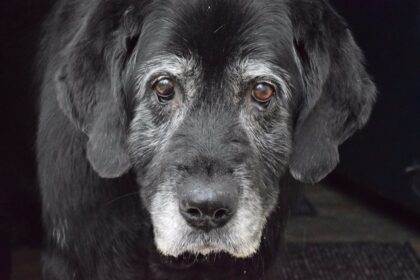 Hearing loss, poor eyesight, dull fur, and dental problems are also typical for older dogs. Dog owners often equate it with “stubbornness” when their dogs no longer come when called – but more often it is due to the deterioration of their ears. Since there are no hearing aids for dogs, the only thing that can be done is to respond appropriately to the symptoms.
Hearing loss, poor eyesight, dull fur, and dental problems are also typical for older dogs. Dog owners often equate it with “stubbornness” when their dogs no longer come when called – but more often it is due to the deterioration of their ears. Since there are no hearing aids for dogs, the only thing that can be done is to respond appropriately to the symptoms.
It is best for the dog owner to approach the four-legged friend so that he can see who is coming; unexpected touches from behind can also frighten him. Furthermore, if your dog is becoming increasingly hard of hearing, it’s often wiser to keep him on a leash during walks, as he might not hear a command in an emergency and be unable to respond accordingly. Incidentally, dogs, even older ones, quickly learn to understand commands as gestures.
Tired old eyes. If the eyes begin to suffer from aging, there’s often not much you can do. However, you can provide support by, for example, providing your dog with certain vitamins (especially vitamins A, C, and E) in advance and ensuring he gets enough of them even as he gets older.
The same applies to teeth: Of course, there are no braces or dentures for dogs. Therefore, it’s important to ensure that your dog maintains healthy teeth in advance. Regular checks for tartar, plaque, and gingivitis are important and, just like in humans, are signs that something is wrong.
Veterinarians perform dental cleanings under general anesthesia, but whether this should be expected of an aging dog is questionable. Especially since there are stress-free and natural alternatives for dogs. We address this topic in the article Tartar in dogs.
A dull, lackluster coat: Since metabolism changes with age and certain nutrients in dog food can no longer be adequately metabolized, this often affects the quality of the coat. The skin becomes brittle, itching can occur, and the coat loses its shine.
An important request: Do not wash your dog with shampoo formulated for humans! Dog skin has a different pH level, and human shampoo is usually too harsh for dogs. Not to mention that dogs won’t tolerate the “scent” of our shampoos. There’s nothing wrong with using a suitable dog shampoo, but the problem must be addressed holistically, and sometimes a single shampoo isn’t enough.
But here, too, we can help our old friend, and once again, it’s Mother Nature who provides us with everything we need, namely with the administration of high-quality omega 3-6-9 fatty acids. In the following article, we’ll take a closer look at the topic of coat: How to make your dog’s coat healthy and shiny again.
Old dogs often have a strong smell – not just from their mouths
Especially with age, bad breath often develops, and the coat, or rather the entire dog, begins to smell musty or even unpleasant. Bad breath can have various causes: rotten teeth, tartar, bacteria in the mouth and throat, or problems with the gastrointestinal tract. However, the musty body odor of an old dog is predominantly due to a changed metabolism, an inappropriate diet, and a declining willingness to care for the older animal. But there are great natural remedies that can support fresh breath and make the dog smell more pleasant overall. We’ve also dedicated an article to this topic: Bad breath in dogs and other odors. But first, let’s move on to a topic that affects many older dogs: incontinence.
From incontinence to tremors to seizures
Incontinence is also an issue that affects many older dogs. Sometimes it’s just a few drops, sometimes a whole lake, whatever the case, the dog can no longer hold urine and/or feces. Unconscious voiding, even during sleep, is very annoying for both the dog and the owner. Incontinence can have various causes. Be it an age-related loss of bladder control, problems with the urinary tract or a more neurological cause, such as spondylosis or BSV, which can also trigger tremors or a seizure.
One of the most common causes of incontinence is calcification/ossification of the vertebraebody, spondylosis. Depending on the severity, even older dogs can live with it quite well, but the nerve pathways often suffer greatly. The affected nerve pathways, which can trigger incontinence and other symptoms due to impaired stimulus transmission, can be supported with a vitamin B complex suitable for dogs.
B vitamins are important for the normal function of the nervous system and support the regeneration of nerve pathways. We have also written an article on this topic: Incontinence and nerves in dogs. Here we continue with the topic of joints. There is hardly an old dog that doesn’t struggle with this.
The old bones and joints
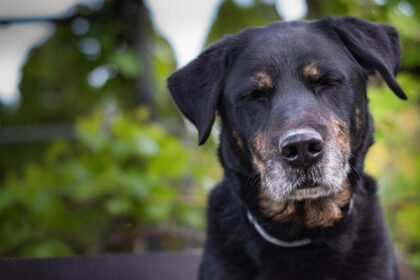 In addition to the health problems already mentioned, joint problems are among the most common signs of aging in dogs. Osteoarthritis, arthritis, rheumatism, hip dysplasia (HD), and other joint diseases with their typical signs of wear and tear plague older dogs just as much as older humans. They impair the animals’ mobility, cause pain, and thus noticeably inhibit their enjoyment of movement and life.
In addition to the health problems already mentioned, joint problems are among the most common signs of aging in dogs. Osteoarthritis, arthritis, rheumatism, hip dysplasia (HD), and other joint diseases with their typical signs of wear and tear plague older dogs just as much as older humans. They impair the animals’ mobility, cause pain, and thus noticeably inhibit their enjoyment of movement and life.
This is where action is needed. There are various ways to ensure a comfortable life for your beloved pet: Injections from the vet can help relieve pain, but they are often quite expensive, provide only short-term relief, and do not address the cause.
Therefore, natural food supplements containing so-called joint nutrients are increasingly being used. These joint nutrients support the normal function of cartilage and the production of synovial fluid, so that even older dogs can enjoy exercise again.
You can also support your four-legged friend by providing a soft, warm place to lie down. Warm grain pillows are particularly beneficial for rheumatic dogs. And here, too, the topic of food comes into focus: just as affected people can influence their illnesses through an adapted diet, the same is possible for dogs. Which brings us to the next point: the special nutritional needs of senior dogs.
Diet: Senior Food
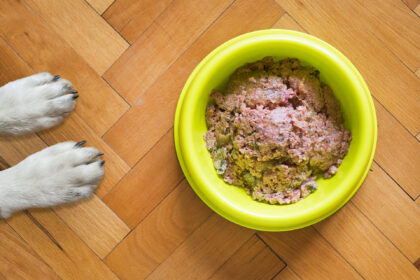 Since even discount stores are increasingly selling senior food (you have to be careful about the quality; we don’t recommend discount products and generally not dry food – the ready-made pizza for dogs). Fortunately, it’s becoming more widely recognized that older animals also have special dietary needs.
Since even discount stores are increasingly selling senior food (you have to be careful about the quality; we don’t recommend discount products and generally not dry food – the ready-made pizza for dogs). Fortunately, it’s becoming more widely recognized that older animals also have special dietary needs.
But digestion also no longer functions as well in many older dogs as it does in younger ones. A sunken body with prominent shoulders and vertebrae is usually not only due to a reduced appetite in old age. The gastrointestinal tract can no longer extract nutrients from food as effectively, but digestion also declines overall. Many older dogs, for example, experience increased flatulence and less solid stools. A special senior food is therefore recommended; it is much easier for the dog to digest, and the important nutrients are also better metabolized.
BARF is also an interesting term that is increasingly being discussed by dog owners. This refers to a largely natural diet using raw food, which is mixed according to the dog’s specific needs according to a nutritional plan. Raw food is generally more beneficial than industrially produced food – and unfortunately, 90% of all food is industrial products. But cooking it yourself is also a very good alternative.
Particular attention should be paid to the intestines, because the immune system can also weaken with age. But what do the two have to do with each other? A lot! The intestines have a very large surface area and are the largest gateway for pathogens. Inside the intestines, for example, antibodies ensure that germs do not spread and that the intestinal flora remains stable. But when the immune system is weakened, the intestines also have difficultyA task to fulfill. Both live side by side, and the intestine is, so to speak, a barrier to germs that can cause inflammation and disease. It should be, if the immune system is intact. Our job is to support our elderly furry friend in ensuring that his defenses remain strong at all times, so that normal immune function is not impaired in the first place. It’s interesting to know that approximately 80% of the immune system is located in the intestines.
The immune system in older dogs
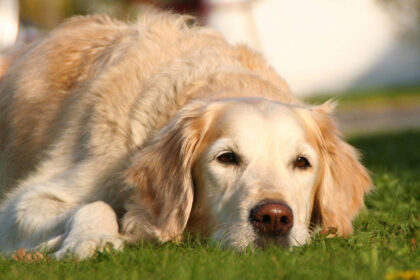 As mentioned above, due to reduced nutrient absorption, the immune system in older animals is usually weaker than in younger ones – therefore, it is important to feed a high-quality food that is tailored to their age and actual needs. But sometimes even that is not enough. To support the immune system and intestinal health, many experts recommend using colostrum as a food supplement.
As mentioned above, due to reduced nutrient absorption, the immune system in older animals is usually weaker than in younger ones – therefore, it is important to feed a high-quality food that is tailored to their age and actual needs. But sometimes even that is not enough. To support the immune system and intestinal health, many experts recommend using colostrum as a food supplement.
What is colostrum? Colostrum is the first milk of mammals that newborns receive as their very first food. It has little to do with the milk that comes later and provides the small animal with the first foundation for building a functioning immune system. Colostrum is also considered a source of health in humans, and there’s some truth to this. It contains the full power of nature in the form of antibodies, proteins, vitamins, minerals, and anti-inflammatory and antibacterial vital substances. It strengthens the intestinal barrier and boosts the immune system. And what’s good for the littlest ones can’t be bad for an old dog.
After all this, one thing remains:
Senior dogs may be calmer and more balanced than youngsters, but they also require increased care to enable them to age gracefully. Appropriate feeding and consideration in everyday life are essential – and only a vital dog can accompany its owner through life as usual, even in old age. This is exactly what is important for a dog as a pack animal: to always be with its family – even in old age.
You and your dog: Life with a dog is characterized by many shared moments and small everyday adventures. Every day brings new experiences that enrich the bond. Those who pay close attention to their four-legged friend’s needs lay the foundation for a long, trusting partnership. Because it’s often the little things that create a special bond between dog and human.
Product information: DOG FIT by PreThis® VITAL immun 🛒 – Natural supplementary food for dogs with carefully balanced micronutrients. Free from additives and genetic engineering. Discover now in the shop:
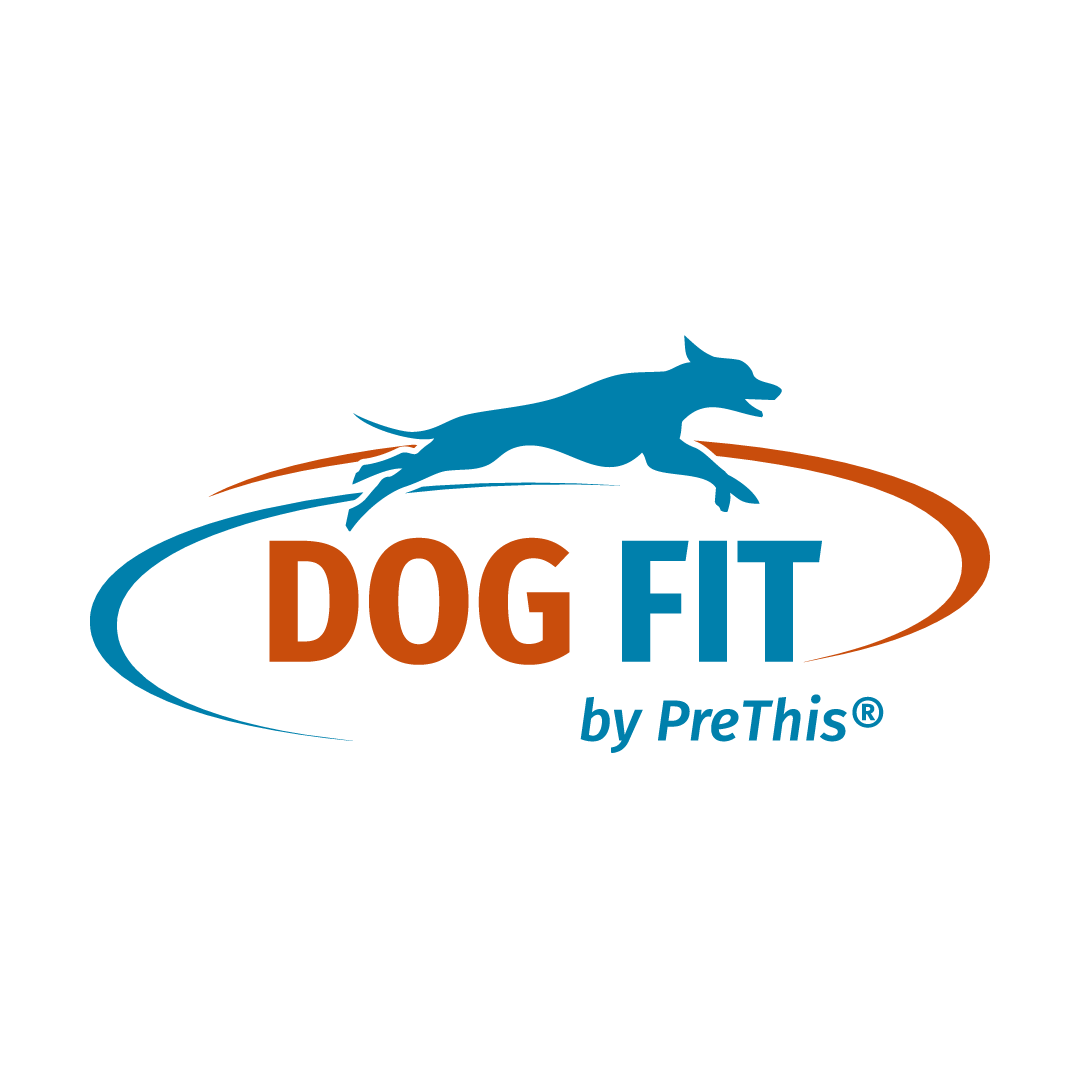
The content of the articles is for general information purposes only and does not replace diagnosis or treatment by a veterinarian. Reviews or testimonials are individual reports from verified customers. This information does not constitute medical advice and should not be understood as such.
Our daily inspiration comes from the special moments with our dogs. Here we share this enthusiasm and invite you to become part of the DOG FIT community on our social media channels.

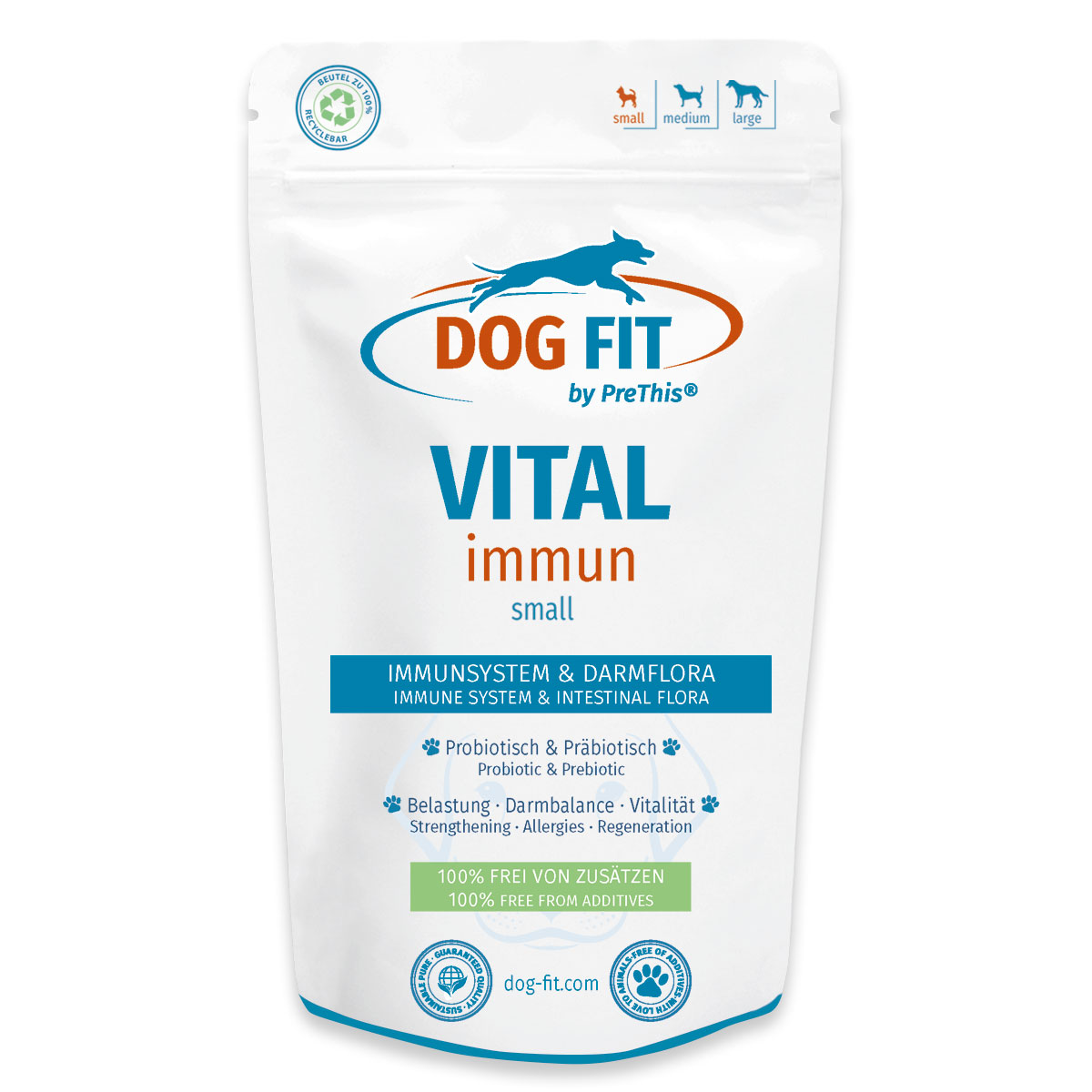

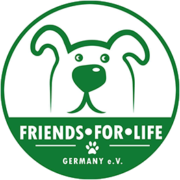
Leave a Reply